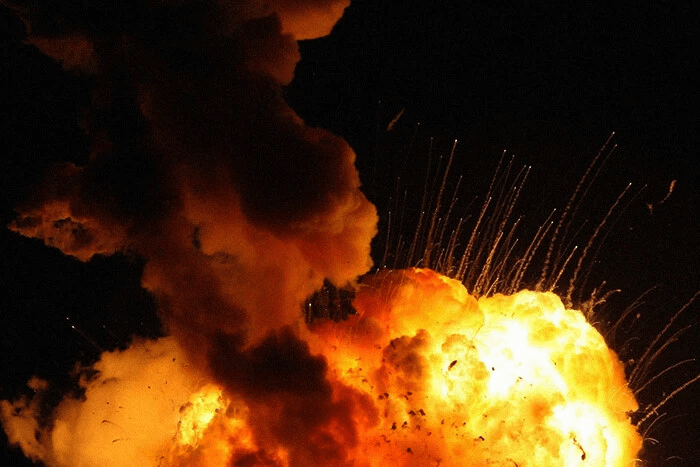What lies behind killing of Andriy Parubiy and other prominent Ukrainians?

Andriy Parubiy, Speaker of the Verkhovna Rada of Ukraine in 2016–2019 and a current Member of Parliament, was shot dead in Lviv yesterday. His death is not only a personal tragedy for his family and colleagues – it is another signal in a war that has long extended beyond the frontlines. A signal addressed to all of us: Russia wages war not only with drones and missiles, it also wages war through fear, targeting those who shape meaning and work for Ukraine.
When we look at the events, particularly since 2022, a pattern emerges: these incidents may be connected. This is not a series of isolated episodes; it is a systemic strategy – one we cannot ignore. The assassination of public figure Iryna Farion in July 2024. The killing of Odesa activist Demyan Hanul in March 2025. A series of attacks on activist and volunteer Serhii Sternenko, the latest of which occurred this spring. Two thwarted assassination attempts on journalist Dmytro Gordon, prevented by Ukrainian security services.
These high-profile cases differ in circumstances but share the same underlying logic. Together, they form a consistent chain of events, indicating the systemic nature of Russia’s strategy, which may amount to official state policy. The Russian Federation has effectively adapted the so-called "decapitation strategy" – traditionally used in military contexts – and applied it to civilian and political structures, orchestrating assassinations and attempted killings of politicians, activists, and public figures whom the Kremlin considers "hostile symbols."
If investigations confirm that Russian authorities are behind these crimes, the legal qualification is clear – international crimes. Under Article 50 of Additional Protocol I to the Geneva Conventions, political leaders, journalists, activists, and opinion-makers who are not directly participating in hostilities are considered civilians. Their deliberate killing during an international armed conflict constitutes a grave breach of international humanitarian law and must be investigated as a war crime.
A key legal element is the connection to the ongoing international armed conflict. Under international law, the entire territory of Ukraine, not just the frontline, constitutes a conflict zone. This means that killings in Lviv or Kyiv may also be classified as war crimes if a Russian link is established.
However, if investigators prove the systematic nature of these attacks – demonstrating that they are part of a deliberate policy to eliminate Ukraine’s political, civic, and cultural elite – the classification shifts: such acts would amount to crimes against humanity under Article 7 of the Rome Statute. This would fundamentally change the scale of responsibility, implicating not only individual perpetrators but the political and military leadership behind these decisions.
It is critical to recognize that this strategy is not new. For centuries, Russia has sought to silence Ukraine’s leading voices: the destruction of the Cossack elite and the autonomy of the Hetmanate, cultural assimilation policies, Bolshevik terror, the "Executed Renaissance" – entire generations of Ukrainian writers, artists, scholars, and politicians were killed or sent to prison camps.
Propaganda, smear campaigns, disinformation, assassinations, attempted murders, and intimidation – these are tools aimed at undermining trust, eroding resilience, and instilling fear and chaos.
The international dimension of this systemic threat is reflected in ongoing legal proceedings. The European Court of Human Rights is currently considering the inter-state case "Ukraine v. Russia (IX)", which focuses specifically on Russia’s systemic practice of politically motivated killings. Ukraine filed the case in February 2021, demanding that the Court recognize Russia’s policy of physically eliminating individuals deemed a threat by the Kremlin, both within Ukraine and abroad. As evidence, Ukraine submitted documentation of 24 high-profile assassinations and assassination attempts carried out between 2003 and 2020 across multiple countries. In particular, this refers to the 2017 killings of Colonel Maksym Shapoval of the Defence Intelligence of Ukraine and Colonel Oleksandr Kharaberyush of the Security Service of Ukraine counterintelligence. Poland and Lithuania have joined the case as third parties, while several EU member states and the United Kingdom have been approached by the Court to provide data on ongoing investigations into related cases.
We must call things by their names: these are not random tragedies. This is a deliberate element of Russia’s hybrid warfare. The goal is to spread chaos, paralyze political life, and silence the voices capable of leading society forward.
In such conditions, the state’s role must go beyond documenting these crimes – it must also build protective infrastructure to safeguard lives. A critical step is ensuring clear delineation of responsibilities among the institutions within the security and defense sector. To strengthen coordination and avoid duplication of functions, Ukraine should consider restructuring the subordination of certain operational units and combat divisions currently dispersed across intelligence and law enforcement bodies – placing them under the Armed Forces of Ukraine where appropriate. This would enable each institution to focus on its core mission: counterintelligence, intelligence gathering, maintaining public order, and ensuring security without wasting scarce resources.
Finally, we must demonstrate to the international community the systemic nature of these crimes so that accountability extends beyond individual perpetrators to the ideology and policy that weaponizes the deliberate killing of civilians. Only through a proper legal assessment of these attacks can we secure justice – not only for those we have lost but for Ukraine itself, as it continues to fight for its right to existence and freedom.
And the main question remains: how many more people are on Russia’s "list" of those it wants to kill? And what can we, as a state, do to protect them?






